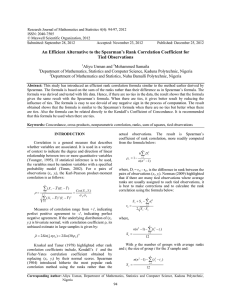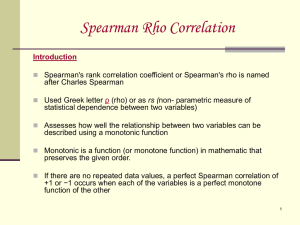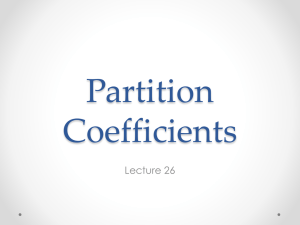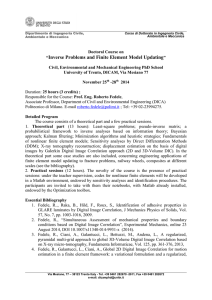Affidabilità Strumenti: Alfa di Cronbach & KR-20
advertisement
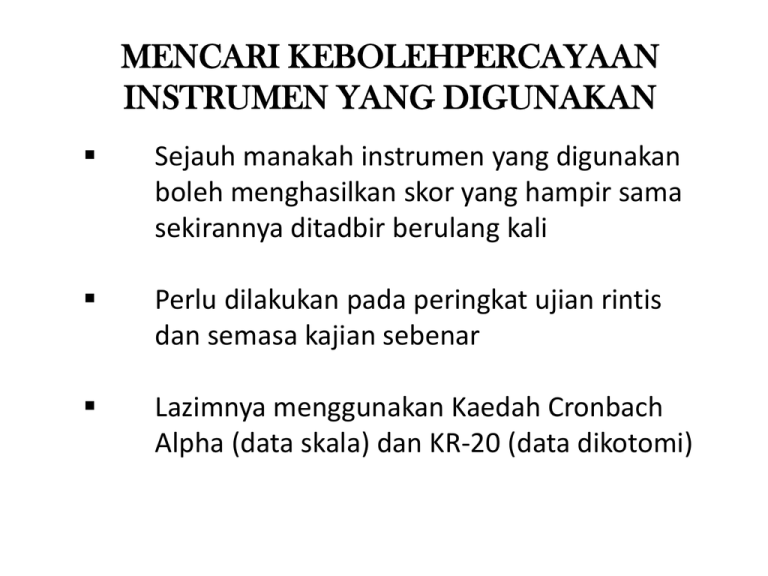
MENCARI KEBOLEHPERCAYAAN INSTRUMEN YANG DIGUNAKAN Sejauh manakah instrumen yang digunakan boleh menghasilkan skor yang hampir sama sekirannya ditadbir berulang kali Perlu dilakukan pada peringkat ujian rintis dan semasa kajian sebenar Lazimnya menggunakan Kaedah Cronbach Alpha (data skala) dan KR-20 (data dikotomi) KEBOLEHPERCAYAAN INSTRUMEN Ketekalan Dalaman (Internal consistency) • Split-half Reliablity • Scorer/Rater Reliability • Kuder-Richardson 20 (KR-20) • Cronbach’s Alpha (α) Data Dikotomi : KR-20 Data Skala : Cronbach α KONSEP KEBOLEHPERCAYAAN Researchers must demonstrate instruments are reliable since without reliability, research results using the instrument are not replicable, and replicability is fundamental to the scientific method. Reliability is the correlation of an item, scale, or instrument with a hypothetical one which truly measures what it is supposed to. Since the true instrument is not available, reliability is estimated in one of four ways: • Internal consistency: Estimation based on the correlation among the variables comprising the set (typically, Cronbach's alpha, KR-20) • Split-half reliability: Estimation based on the correlation of two equivalent forms of the scale (typically, the Spearman-Brown coefficient) • Test-retest reliability: Estimation based on the correlation between two (or more) administrations of the same item, scale, or instrument for different times, locations, or populations, when the two administrations do not differ on other relevant variables (typically, the Spearman Brown coefficient) • Inter-rater reliability: Estimation based on the correlation of scores between/among two or more raters who rate the same item, scale, or instrument Nunnally and Bernstein (1994) provided guidance in the interpretation of the reliability coefficient by stating that a value of .70 is sufficient for early stages of research, but that basic research should require test scores to have a reliability coefficient of .80 or higher. When important decisions are to be made with test scores, a reliability coefficient of .90 is the minimum with .95 or higher a desirable standard. (Nunnally, J.C. & Bernstein, I.H. (1994). Psychometric Theory (3 Edition)). rd Nilai Koefisien α Interpretasi Nilai Koefisien α .90 and up Interpretasi Excellent > 0.9 Excellent > 0.8 Good .80 - .89 Good > 0.7 Acceptable .70 - .79 Adequate > 0.6 Questionable > 0.5 Poor < 0.5 Unacceptable George, D., & Mallery, P. (2003). SPSS for Windows step by step: A simple guide and reference. 11.0 update (4th ed.). Boston: Allyn & Bacon. below .70 May have limited applicability U.S. Department of Labor Employment and Training Administration 1999 Mencari Cronbach α 1 2 1 1 Kesan item kepada nilai koefisien Cronbach α **Pengguguran item bukan hanya bergantung kepada nilai Cronbach alfa Melapor Kebolehpercayaan Instrumen Secara keseluruhan instrumen kajian mempunyai nilai kebolehpercayaan (Cronbach alfa) yang tinggi (α = 0.86). Ini menunjukkan instrumen yang digunakan sesuai bagi menilai penilaian guru terhadap buku teks. Menurut Nunally dan Bernstein (1994), nilai .80 dan ke atas adalah mencukupi bagi instrumen yang baru dibina atau pertama kali digunakan manakal George & Mallery (2003) menyatakan nilai koefisiens kebolehpercayaan α > 0.7 menunjukkan kebolehpercyaan instrumen pada tahap baik. Di samping itu, anda juga perlu melaporkan nilai kebolehpercayaan bagi setiap aspek (sub-konstruk)
